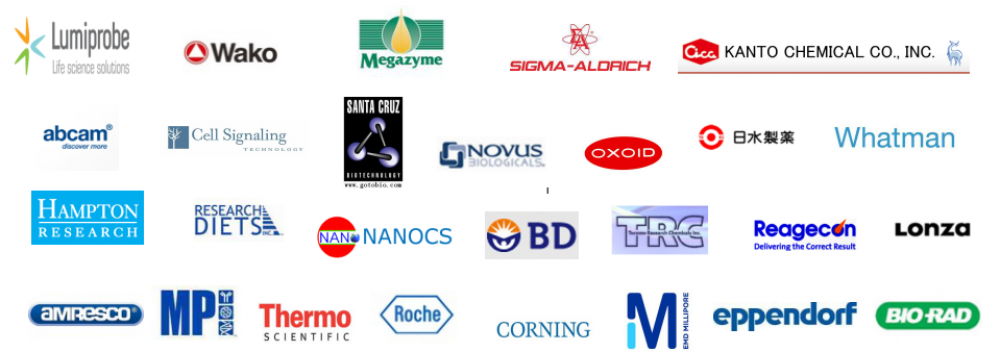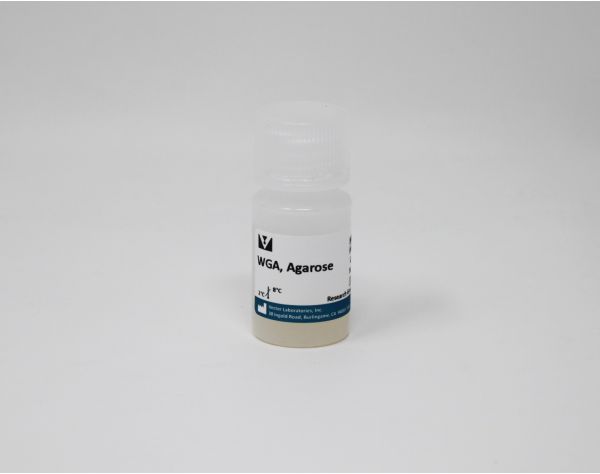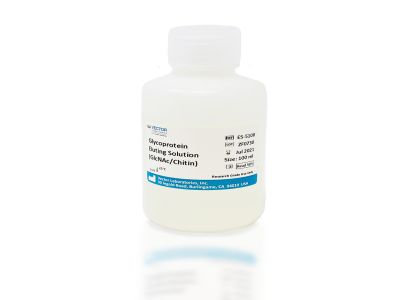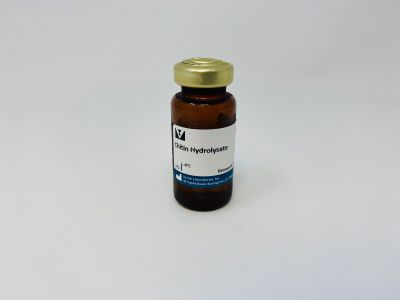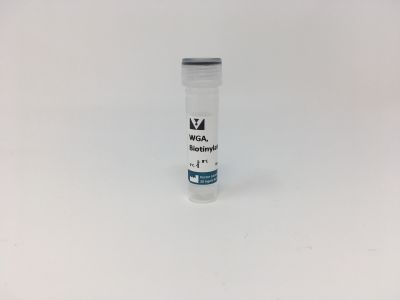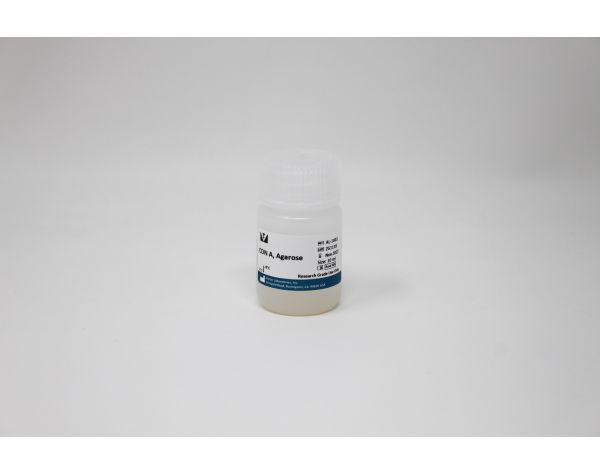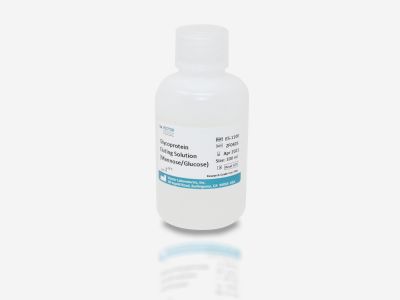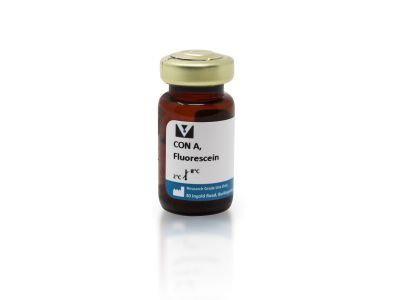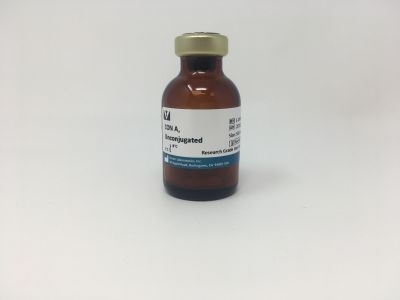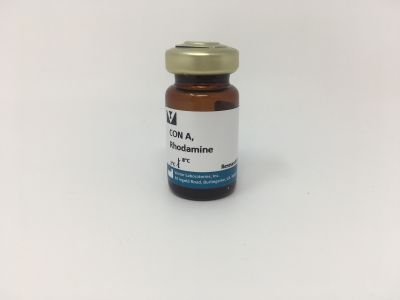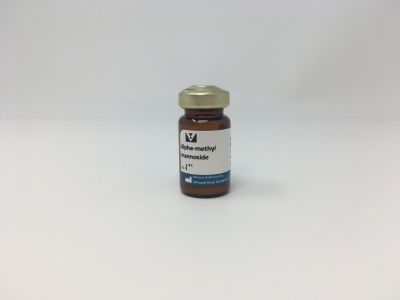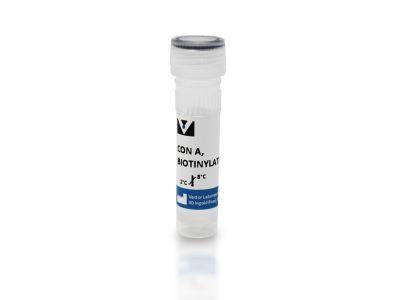Vector Labs代理,欢迎访问Vector Labs官网或者咨询我们获取相关Vector Labs产品信息以及报价。
Vector Labs 公司是世界著名的生物学检测试剂公司,七十年代其在全球首推的生物素-亲和素系统引领了生物学检测方法的重大革命,该系统被普遍视为目前最灵敏、最可靠与最有效的染色系统,并被广泛应用于免疫组织化学、免疫电镜、原位杂交与凝集素化学中。该系统仍在不断地发展,以满足广大研究人员的各种不同要求。Vector 公司还是世界上凝集素产品的主要供应商,并提供大量的新产品,如酶底物、神经元示踪剂及蛋白质、糖类与核酸的标记、分离与检测试剂。
Galanthus Nivalis Lectin (GNL), Agarose bound
Description
Agarose bound Galanthus nivalis lectin is prepared using our affinity-purified lectins. Galanthus nivalis lectin, unlike most mannose-specific lectins, is not a metalloprotein and does not require Ca++ or Mn++ for binding. Binding seems to be preferentially directed toward structures containing (α-1,3) mannose residues.
In contrast to most mannose-binding lectins, GNL will not bind α-linked glucose. Reports indicate that this lectin binds rat and mouse IgM but not IgG. The only protein from human serum reported to bind to this lectin is α2-macroglobulin. GNL binds to many viral glycoproteins.
Features:
- Bead diameter ranges in size from 45-165 microns
- Matrix is stable in solutions at pH 3-11 as well as many organic solvents
- Immobilized lectins are prepared using affinity purified lectins
- Covalent attachment preserves lectin activity and minimizes conformational changes that might result in nonspecific or hydrophobic interactions
- Hydrophilic spacer arm is inserted between the lectin and the matrix
- Conjugated proteins are not leached off the beads by Tris or other routinely used buffers
- No residual charges present after conjugation. This minimizes non-specific binding to the matrix
- Product supplied as a 1:1 suspension in buffer
- 3 mg lectin/ml gel
- Inhibiting/Eluting Sugar: 100 mM – 200 mM α-methylmannoside or Glycoprotein Eluting Solution (ES-1100)
Specifications
| Unit Size | 5 ml |
|---|---|
| Applications | Glycobiology, Affinity Chromatography |
| Recommended Storage | 2-8 °C DO NOT FREEZE |
| Solution | 10 mM HEPES, pH 7.5, 0.15 M NaCl, 0.1 mM CaCl2, 0.01 mM MnCl2, 20 mM mannose, 0.08% sodium azide |
| Recommended Usage | Wash gel thoroughly with buffer before use to remove sugar added to stabilize the lectin. Recommended product for eluting glycoconjugates bound to this agarose-lectin: Glycoprotein Eluting Solution, Cat. No. ES-1100. Alternatively, 0.1 M α methyl mannoside can be used.For those glycoconjugates having a very high affinity for GNL, it may be necessary to lower the pH of the eluting sugar solution to pH 4.0 with acetic acid and increase the concentration of the α methyl mannoside to 0.5 M. After use, wash the gel with several column volumes of buffered saline, then resuspend gel in buffered saline containing 0.08% sodium azide for storage. |
| Matrix Conjugate | Lectins |
| Sugar Specificity | Mannose |
| Conjugate | Agarose |
Documents
- Safety Data Sheet
- Lectins in Histochemistry, ELISA, and Western Blot Applications
- Download CoA
- Datasheet
Product FAQs
I purchased an agarose bound lectin from Vector Labs. Do you have a protocol outline on how this may be applied in a column format?
What are recommended conditions for using the agarose-lectin in chromatography?
Related Products

Galanthus Nivalis Lectin (GNL), Unconjugated Catalog #: L-1240-5

α-methylmannoside Catalog #: S-9005

Galanthus Nivalis Lectin (GNL), Fluorescein Catalog #: FL-1241-2

Glycoprotein Eluting Solution for Mannose/Glucose Binding Lectins Catalog #: ES-1100-100

Galanthus Nivalis Lectin (GNL), Biotinylated Catalog #: B-1245-2
Citations
Technical Information
Our coupling method provides several advantages over the traditional cyanogen bromide procedure:
- Maximum carbohydrate binding activity of the coupled lectins is retained
- Linkage is stable over a range of pH values
- Conjugated proteins are not leached off the beads by Tris or other routinely used buffers
- No residual charges are present after conjugation. This minimizes non-specific binding to the matrix.
Our agarose bound lectins are supplied at a constant concentration of lectin per ml of settled beads. The concentration for each lectin is selected to achieve the highest glycoconjugate binding capacity per mg of lectin present in the beads. Each lot is tested for its binding capacity using glycoproteins known to bind the lectin. This provides a guideline for the user and assures the quality of our agarose bound lectins.
Inhibiting/Eluting Sugar: 100 mM - 200 mM α-methylmannoside
